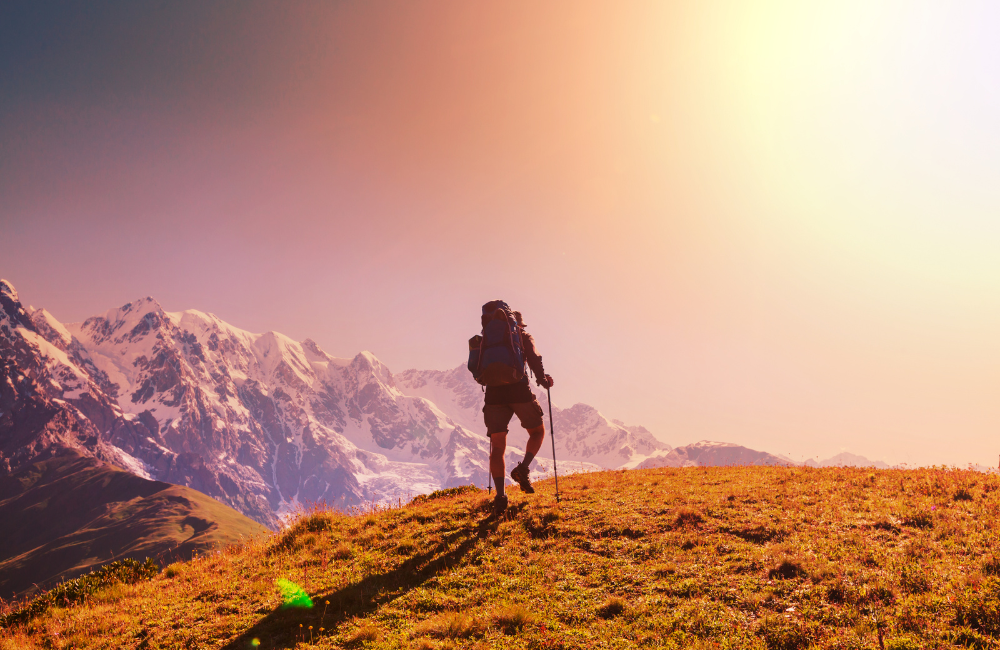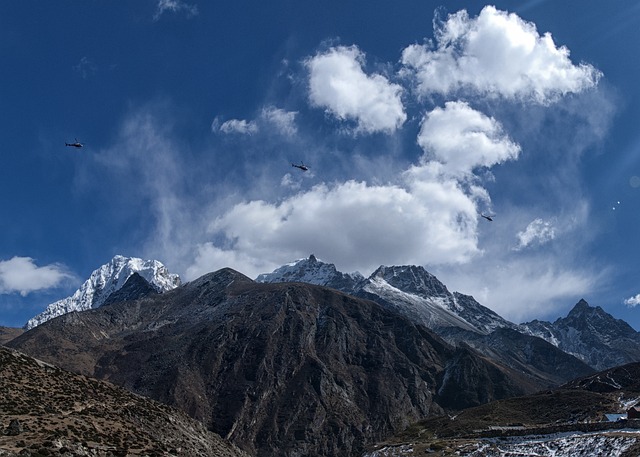No one likes to play ‘worst case scenario’, but when it comes to hiking, there are certain risks involved. Taking out good travel insurance for trekking in Nepal is a small price to pay for peace of mind.
Unlike standard travel insurance. Trekking insurance is a specific type of cover for people who are exposed to high altitudes, avalanches, and adventure-related mishaps in a foreign country.
In this guide, I’ll talk about why you need trekking insurance and what it should cover. I’ll also put you on to some of the best international trekking covers as trusted by adventurers around the world.

Get travel insurance for Nepal
I recommend the adventure travel insurance specialist, Rise & Shield.
Do You Need Travel Insurance For Hiking In Nepal?
Travel insurance is not mandatory, but many Nepal trekking companies will request that you have hiking insurance to join their tours. Most agencies recommend that you are covered for a minimum of $100,000 plus emergency medical evacuation.
It might seem like an unnecessary use of precious travel funds but insurance is one of those things it’s better to ‘have and not need' than to 'need and not have’. Even if it’s not strictly required, I wouldn’t leave home without at least a basic cover policy.
Risks While Trekking In Nepal
Altitude Sickness
High altitude sickness, also known as acute mountain sickness (AMS), is a common condition that can affect trekkers and climbers. It is hard to say exactly who will be affected by AMS but its usually seen in those who ascend to high altitudes too quickly without proper acclimatization.
Many trekking routes in Nepal involve hiking to high elevations with a risk of altitude sickness. Hikes in Nepal that pose a risk of high altitude sickness include Everest Base Camp, Annapurna Circuit trek, Langtang Valley hike and Manaslu Circuit. All of these have passes and viewpoints 5000m (16, 400 ft) or above.
Symptoms of altitude sickness can range from mild to severe. These may include headaches, nausea and shortness of breath. In severe cases, altitude sickness can lead to life threatening cerebral or pulmonary edema.
Trekking Accidents
It’s not worth over-stressing about it but accidents in the mountains and on hiking routes can and do happen. Even small injuries like a sprain or pulled muscle can be a big problem on a trek.
High altitudes can cause you to feel dizzy and disorientated, this increased the risk of accidents. The high altitudes also worsen existing health problems including any heart or respiratory issues.
Also keep in mind that you will be in a foreign country and the healthcare system may be a little different to what you are used to. It’s better to have insurance that will cover the best possible hospital care and relocation back to your own country if necessary.
Avalanches
Although the risk of an avalanche or landslide is rare, these do happen on hiking routes in Nepal. During the cold months (December to February) the risk of avalanches is typically highest. Avalanches are also frequent in the spring (March to May) as ice packs start to melt.
According to the Nepal National Mountain Guide Association (NNMGA), avalanches in Nepal cause an average of 12 deaths per year. In 2015, a massive earthquake triggered an avalanche on Mount Everest. This freak accident killed 19 people at the Everest Base Camp (admittedly all of them were climbers, not hikers).

Get travel insurance for Nepal
I recommend the adventure travel insurance specialist, Rise & Shield.
What Should Your Trekking Insurance Cover?

Accidents
As previously mentioned, accidents are always a risk while hiking. This is even more so at high altitudes. Your Nepal trekking insurance should be enough to cover hospitalization and treatment in a worst-case-scenario.
Evacuation By Helicopter
If something does go wrong in the mountains, your only exit option is by air. If you have to pay out of pocket, a helicopter evacuation will cost anywhere from $2000.
According to a 2020 published paper, between 2016 & 2017, a single hospital in Nepal (CIWEC hospital) received 1,354 helicopter evacuated patients. The vast majority of these patients were from the Everest region. Some of these evacuations were probably an over-reaction. Still, its obviously a risk worth considering.
Cover for helicopter rescue is especially vital for peak climbing. It is an important factor when calculating the cost of climbing Everest and other 8000ers.
Baggage Loss Or Theft
Imagine getting to Nepal only to find your trekking boots did not make the trip. Stolen, lost or delayed gear could ruin your whole adventure. Make sure your insurance covers baggage (and will pay out fairly quickly) so that you can afford to replace what you need and get going again.
Expenses For Delayed And Cancelled Flights
Natural disasters and weather are beyond our control. This doesn’t mean you can’t plan ahead for unwanted situations. Flights in Nepal can be canceled or delayed for days (even weeks) due to bad weather. Good travel insurance should cover unforeseen expenses including accommodation while you wait for rescheduled flights.
General Health Cover
Insurance is not only for trekking. For one thing, Asia's local food does not agree with everyone! A good plan should cover doctors' appointments and prescribed medicine (whether for flu, COVID or an upset stomach). Most travel insurance will also cover limited dentistry work.
Why Is Travel Insurance For Nepal So Expensive?
There are a lot of travel insurance products on the market at an equally wide range of prices. It’s tempting to go with a cheap option. Although there are some decent choices available, the low-budget insurance plans will not cover what you need for high-altitude trekking in Nepal.
Over recent years, Nepal has seen a steep increase in tourist numbers. There has also been an exponential increase in the number of claims for helicopter rescues. Not all of these claims have been legit. There have been several scams where rescue companies paid travelers to claim for unnecessary (or non-existent) helicopter services.
Understandably, this has made many travel insurers hesitant to include air rescue in their cover. Those that do, price their policies accordingly.
Best Travel Insurance For Trekking In Nepal
I am by no means an insurance expert. These recommendations are based on my own experience with insurance companies and those of travelers I’ve met along the way. You should always read the policy fine print and ask a ton of ‘what if’ questions before signing up for insurance.
1. Rise & Shield
Rise & Shield are my #1 pick. They are a specialist adventure travel insurance company. They have various adventure travel activity packs that on the extreme end cover hiking up to 6,500m (this will cover almost all hikes in Nepal including Island Peak and Mera Peak). I recommend checking them out.
2. World Nomads
World Nomads offer emergency evacuation and medical assistance for trekking in Nepal. This insurer provides all aspects of cover including baggage and repatriation in the event of an accident and trip delay cover (including weather-related delays).
World Nomads is also an excellent choice for remote workers as they cover equipment including cameras and laptops.
3. Allianz Travel Insurance
Allianz has been around for years. They are professionals in all types of insurance including travel cover. Alianz Travel sells a range of plans depending on what type of benefits you want to include.
4. Travelex Insurance Services
Travelex is another reliable insurer. They cover all types of international trips and have specific packages for backpacking and long term travel. You can select from different, upgradable cover plans so you will only pay for what you need. Most of their plans cover emergency medical evacuation and travel delays.

